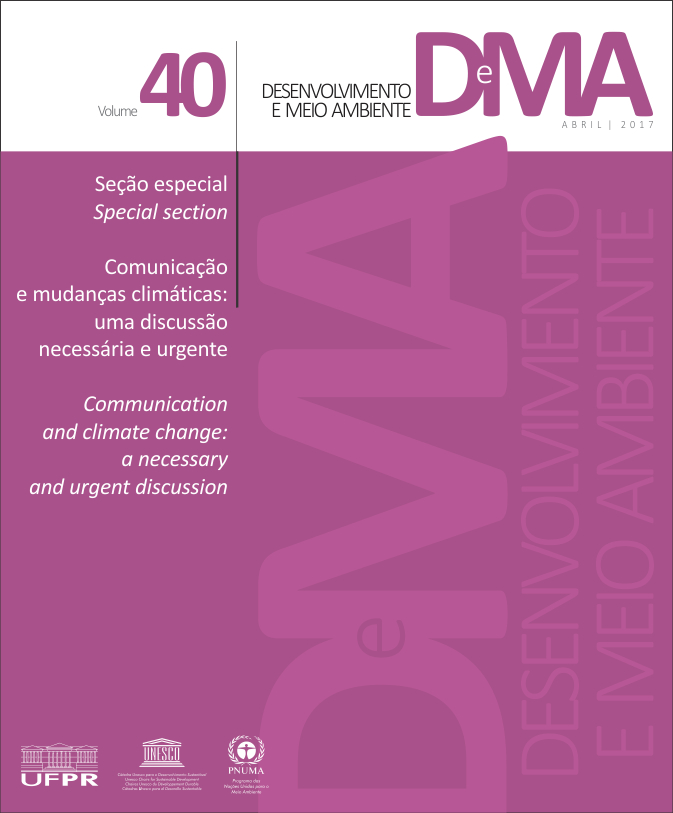Climate Change in Twitter: The Prevalence of Media and Politics
DOI:
https://doi.org/10.5380/dma.v40i0.49047Keywords:
climate change, communication, social media, TwitterAbstract
The 21th Conference of Parties (COP21) of the United Nations Framework Convention on Climate Change was identified as the most promising summit for a global agreement aiming to combat the effects of climate change and reducing emissions of greenhouse gases. This article analyses online communications about climate change during the Conference. The subjects discussed in social networks are likely to affect public debates and provide important information regarding public opinion and perceptions on climate change (Williams et al., 2015). This paper focuses on the popular social network Twitter, which has been considered a barometer of public perception (Brown & Wake, 2015). Twitter has more than 310 million active users per month, of which 79% are outside the United States, allowing for analyses of different linguistic contexts, namely under-researched ones, such as Spanish and Portuguese. This study provides a first outlook at Twitter uses and content in those languages aiming to answer the following research questions: Which type of content is most popular in Twitter about climate change? What language (words and names) is used to discuss this issue? To what extent is the traditional media a relevant reference in climate change communication in this social media? Who are the actors that compose this social media and who are the most influential ones? This study concludes, among other things, that several politicians stand out among the most influential actors and that the media is an important source of information in this social network. In the Portuguese data, the study found a very high level of activity of citizens, who dominated the production of content on COP 21.
Downloads
Published
How to Cite
Issue
Section
License
Copyright on works published in this journal rests with the author, with first publication rights for the journal. The content of published works is the sole responsibility of the authors. DMA is an open access journal and has adopted the Creative Commons Attribution 4.0 Not Adapted (CC-BY) license since January 2023. Therefore, when published by this journal, articles are free to share (copy and redistribute the material in any medium or format for any purpose, even commercial) and adapt (remix, transform, and create from the material for any purpose, even commercial). You must give appropriate credit, provide a link to the license and indicate if changes have been made.
The contents published by DMA from v. 53, 2020 to v. 60, 2022 are protected by the Creative Commons Attribution-NonCommercial-NoDerivatives 4.0 International license.
DMA has been an open access journal since its creation, however, from v.1 of 2000 to v. 52 of 2019, the journal did not adopt a Creative Commons license and therefore the type of license is not indicated on the first page of the articles.






